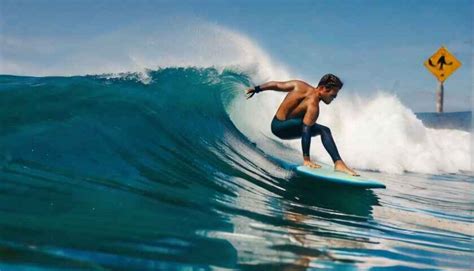Introduction
Surfing enthusiasts of all levels strive to improve their skills and maximize their time on the water. One crucial aspect of surfing is cap for waves, which plays a significant role in determining your ability to catch and ride waves effectively. By fine-tuning your Cap for Waves, you can unlock a whole new level of surfing mastery.

What is Cap for Waves?
Cap for Waves essentially refers to your ability to anticipate and position yourself for optimal wave-catching opportunities. It involves a combination of skills, including:
- Wave Reading: Understanding how waves break, their speed, direction, and potential for rideability.
- Positioning: Determining the ideal location in the water to increase your chances of catching waves.
- Timing: Anticipating the right moment to paddle and pop up on your board to catch a wave.
Benefits of Cap for Waves
Enhancing your Cap for Waves brings numerous benefits to your surfing experience:
- Increased Wave Count: Catching more waves gives you more practice, leading to faster skill progression.
- Improved Ride Quality: Cap for Waves allows you to select better waves, maximizing the length and quality of your rides.
- Reduced Frustration: By proactively positioning yourself, you minimize the frustration of missing waves.
- Enhanced Safety: Proper Cap for Waves ensures you are in the right spot at the right time, reducing the risk of collisions with other surfers or obstacles.
Developing Cap for Waves
Building a strong Cap for Waves involves developing a combination of physical, mental, and technical abilities:
Physical:
- Cardiovascular Endurance: Sustained paddling requires a strong cardiovascular system.
- Upper Body Strength: Paddling effectively requires strong arms, shoulders, and back.
- Core Stability: A strong core is essential for balance and stability on the board.
Mental:
- Wave Observation: Paying attention to wave patterns and behaviors.
- Anticipation: Predicting where waves will break and where they will offer the best ride.
- Decision-Making: Quickly assessing wave potential and deciding on a course of action.
Technical:
- Paddle Technique: Efficient paddling technique reduces energy expenditure and increases speed.
- Pop-Up Timing: The timing of your pop-up determines your ability to catch the wave.
- Board Selection: Choosing the right board for your skill level and wave conditions.
Tips and Tricks
- Start in Small Waves: Practice Cap for Waves in smaller, more manageable waves to build confidence.
- Observe Other Surfers: Watch experienced surfers and analyze their wave-catching techniques.
- Use Video Analysis: Record yourself surfing and review your footage to identify areas for improvement.
- Seek Feedback: Ask a surf coach or experienced surfer for feedback on your Cap for Waves.
- Practice Regularly: Consistency is key to developing a strong Cap for Waves.
FAQs
1. How long does it take to develop Cap for Waves?
The timeline for developing Cap for Waves varies depending on individual factors, but with consistent practice, you can make significant progress within a few months.
2. Is Cap for Waves important for all surfing levels?
Yes, Cap for Waves is valuable for surfers of all skill levels. It allows beginners to increase their wave count and experienced surfers to refine their technique and catch more optimal waves.
3. Can you improve Cap for Waves by practicing other sports?
Yes, engaging in sports that improve your physical and mental skills, such as swimming, running, or yoga, can indirectly benefit your Cap for Waves.
4. How can you stay up-to-date with the latest advancements in Cap for Waves?
Attend surf clinics, read surf magazines, and follow surf coaches and experts on social media for insights and techniques.
5. What are some tools and technologies that can assist Cap for Waves?
Wave prediction tools, such as Surfline, can provide valuable information about wave conditions and help you make informed decisions about where to surf.
6. Are there any physical limitations that can affect Cap for Waves?
Certain physical limitations, such as reduced mobility or injuries, may impact Cap for Waves. However, with adaptations and modifications, it is possible to overcome these challenges.
Tables
Table 1: Benefits of Cap for Waves
| Benefit | Description |
|---|---|
| Increased Wave Count | Catch more waves, increasing the opportunity for practice and progression. |
| Improved Ride Quality | Select better waves, resulting in longer and more enjoyable rides. |
| Reduced Frustration | Avoid missing waves and maximize your surfing time. |
| Enhanced Safety | Positioning yourself effectively reduces the risk of collisions. |
Table 2: Components of Cap for Waves
| Component | Description |
|---|---|
| Wave Reading | Understanding the wave’s behavior, speed, direction, and potential rideability. |
| Positioning | Determining the ideal location in the water to increase the chances of catching waves. |
| Timing | Anticipating the right moment to paddle and pop up on your board to catch a wave. |
Table 3: Physical, Mental, and Technical Factors for Developing Cap for Waves
| Factor | Physical | Mental | Technical |
|---|---|---|---|
| Cardiovascular Endurance | Upper Body Strength | Wave Observation | Paddle Technique |
| Core Stability | Anticipation | Pop-Up Timing | Board Selection |
| Decision-Making | Board Control |
Table 4: Cap for Waves Development Timeline
| Skill Level | Timeframe |
|---|---|
| Beginner | 1-3 Months |
| Intermediate | 3-6 Months |
| Advanced | 6+ Months |
Conclusion
Developing a strong Cap for Waves is essential for enhancing your surfing performance. By understanding the components, practicing consistently, and utilizing the tips and techniques outlined in this guide, you can optimize your wave-catching abilities. Remember, mastery takes time and dedication, so stay persistent, enjoy the process, and you will undoubtedly captivate waves with confidence and proficiency.
